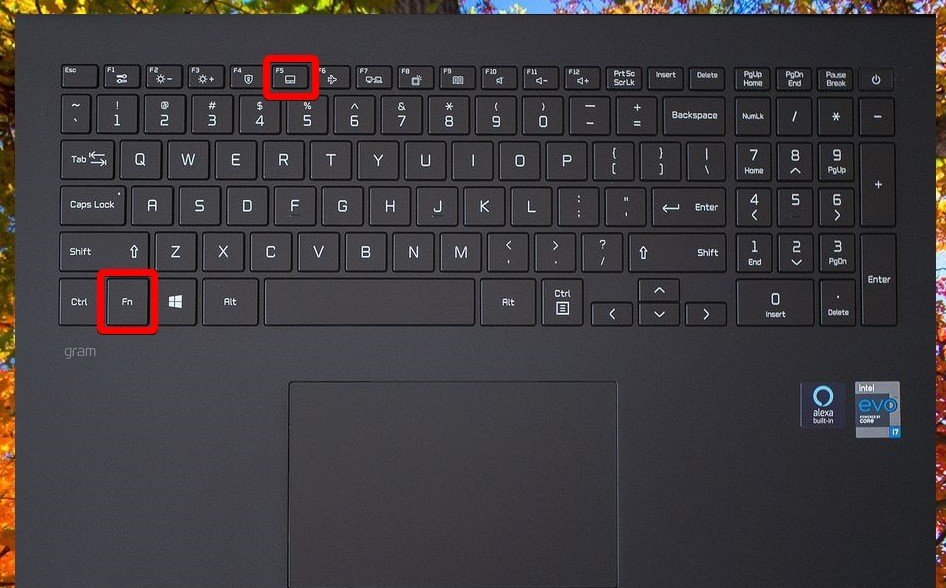Touchpad Enable Shortcuts for Different Windows Laptop Brands
Posted in Tech on September 29, 2025
Tags: Laptop, Touchpad, Windows

Different laptop brands generally use the same Windows Precision Touchpad gestures, but they may have unique keyboard shortcuts to enable or disable the touchpad. You can also customize most touchpad gestures in the Windows settings.
Brand-specific touchpad actions and settings
HP
Enable/Disable: On some models, you can double-tap the upper-left corner of the touchpad to toggle it on or off.
Advanced gestures: HP offers additional configuration options for advanced gestures under the "Touchpad settings" in Windows.
Dell
Enable/Disable: Some laptops with an ALPS touchpad feature one-finger scroll zones along the edges.
Circular scroll: For some older models, you can scroll by moving a finger in a circular motion in the scroll zones.
"My Favorites" gesture: Some older models let you launch a pre-configured application with a three-finger tap.
Lenovo
Enable/Disable: A function key combination like Fn + F6 or Fn + F9 is common for toggling the touchpad.
Advanced gestures: Lenovo's support site provides tutorials for adjusting advanced gestures via the Windows Touchpad settings.
ThinkPad-specific: Some ThinkPad models have a dedicated "UltraNav" or "ThinkPad" tab in the Mouse Properties window for touchpad controls.
Asus
Enable/Disable: To toggle the touchpad, search for and open "Touchpad settings" in the Windows search bar.
ASUS ScreenXpert: On laptops with the ScreenXpert feature, a one-finger swipe from the top-right corner of the touchpad can launch the utility.
Acer
Toggle touchpad: Press Fn + F7 to turn the touchpad on or off. On some models, the touchpad icon might appear on a different function key.
Precision touchpad: Many modern Acer laptops, like the Nitro 5, feature a Windows Precision Touchpad that allows you to configure gestures in Windows settings.
Advanced options: Some older models with an Elan touchpad may have more granular settings available through the Mouse Properties menu in the Windows Control Panel.
MSI
Toggle touchpad: The shortcut key combination to enable or disable the touchpad is typically Fn + F3. For newer MSI laptops, such as the Summit and Prestige series, the shortcut is Fn + F4.
System settings: You can also enable or disable the touchpad in Windows settings. Search for and open "Touchpad settings" in the Start menu.
Customization: MSI laptops with a Precision Touchpad can have their gestures customized in the Windows settings.
Razer
Precision touchpad: Razer Blade gaming laptops feature a Windows Precision Touchpad. This means that the gestures are primarily managed through the standard Windows touchpad settings.
Custom shortcuts: Windows allows you to assign custom keyboard shortcuts to three- and four-finger taps and swipes on a Precision Touchpad.
Razer Synapse: While not for touchpad gestures, the Razer Synapse software is used for configuring other peripherals like keyboards and mice, but does not provide extra touchpad gesture functionality.
Microsoft
Precision touchpad: As the developers of Windows, Microsoft's Surface devices all feature a Precision Touchpad, and their gestures are managed entirely within Windows settings.
Customization: Microsoft provides comprehensive guides on how to customize your touchpad settings, such as cursor speed, sensitivity, and three- or four-finger gestures.
Surface-specific: On Surface devices with a detachable keyboard, you can enable or disable the touchpad by going to Settings > Bluetooth & devices > Touchpad.
Common Windows touchpad gestures
These gestures are standard on most modern laptops with a Windows Precision Touchpad, including those from HP, Dell, Lenovo, and Asus.
- One-finger tap: Single-click.
- Two-finger tap: Right-click.
- Two-finger scroll: Place two fingers on the touchpad and slide them horizontally or vertically to scroll.
- Two-finger pinch: Place two fingers on the touchpad and pinch them together to zoom out, or spread them apart to zoom in.
- Three-finger swipe up: View all open windows (Task View).
- Three-finger swipe down: Show the desktop.
- Three-finger swipe left/right: Switch between open applications.
- Four-finger swipe left/right: Switch between virtual desktops.
- Three-finger tap: Open Windows Search.
- Four-finger tap: Open Action Center.
How to enable and customize touchpad shortcuts
Regardless of your laptop's brand, you can manage your touchpad gestures through Windows settings:
- Open the Start Menu.
- Go to Settings > Bluetooth & devices > Touchpad.
- Expand the Three-finger gestures or Four-finger gestures sections.
- Use the drop-down menus to change the action for taps and swipes to your preferred shortcuts.